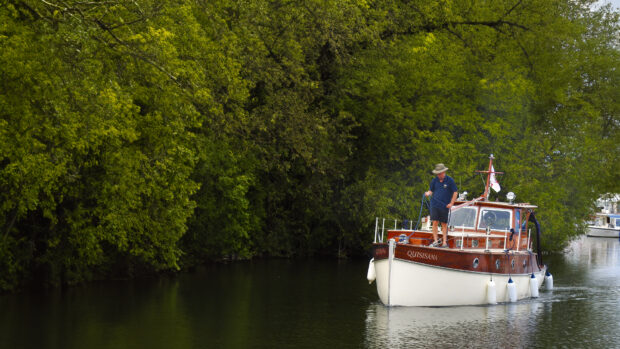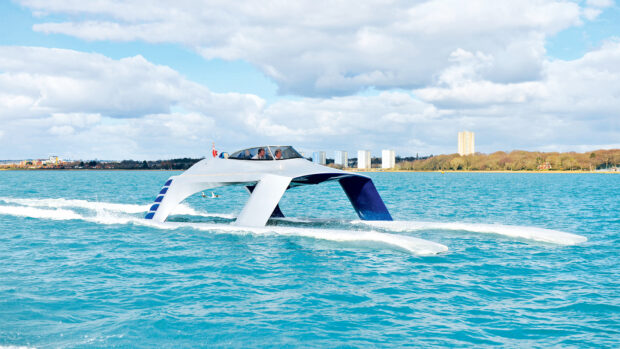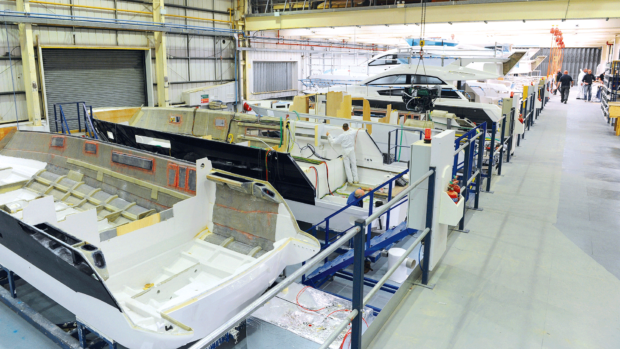Mercury's 600hp 7.6-litre V12 is its most powerful production outboard to date with a host of radical new innovations. We reveal its innermost secrets...
For the last few years Mercury and Yamaha have been slugging it out for the title of the world’s most powerful production outboard engine, creeping up in stages from 400hp to 425hp and finally 450hp.
In 2021 Mercury knocked Yamaha clean out of the ring with a punch so big it’s hard to see anyone bothering to challenge them. The US engine builder’s monster 7.6-litre V12 outboard engine delivers a staggering 600hp and easily takes the title of world’s most powerful outboard engine.

The new Mercury monster 7.6-litre V12
To 50-something year-old sportsboat owners brought up on a diet of spluttering two-stroke oil-burners struggling to make more than 60hp, it seems an utterly outlandish proposition and yet Mercury is fully expecting to sell thousands of them, mostly as twins, triple or even quad installations.
The world, it seems, cannot get enough of big outboard-engined day boats and cruisers – and it’s not just the US builders – everyone from Windy to Wally is building them. So what are the secrets behind Mercury’s new 600hp V12 and how has it managed to outsmart the opposition.
How do you create the world’s the most powerful production outboard?
The starting point for building the most powerful outboard engine, is an all-new narrow angle V12 block with the same 60 degree angle between its banks as the smaller V8 and V6 ranges.
Naturally aspirated with quad cams, 4-valves per cylinder and indirect injection, the emphasis is on smoothness and refinement as much as maximum power. As well as the inherent natural balance of a V12 configuration, every effort has been made to reduce unwanted noise and vibrations.
Article continues below…

World’s most powerful outboard makes UK debut
Yamaha's 350hp V8 four-stroke makes UK debut and Suzuki announce 5-year warranty.

Yamaha 425hp outboard: Most powerful V8 set-up tested
A key part of that is a revolutionary new design that means the whole top section of the motor remains fixed at 90 degrees to the transom with only the slim swivelling lower gear case taking care of steering. This has a number of advantages; first, there is no need for any external steering rams, it’s all taken care of internally with only a digital fly-by-wire link to the helm.

The relatively narrow gearcase can swivel through 45 degrees
Second, the relatively narrow gearcase can swivel through 45 degrees compared to the 30 degrees which most outboards are restricted to. This makes for better manoeuvrability, especially at slow speeds where the joystick can make full use of the steering angles to vector the thrust in opposite directions when moving the boat sideways.
Third, with no need to leave big clearances between the engines you can fit more of them onto the same transom or leave the extra room free for bigger swim platforms. Fourth, the engineers and designers only have to worry about the engine’s drag through the air and water in one fixed position rather than when angled off to the side. And last but not least it enables a more rigid mounting position for greater smoothness and refinement.
By keeping the pivot position quite low and some distance from the transom this doesn’t compromise its ability to tilt, it can still lift the propeller clear of the water and its intrusion into the boat is barely any longer than the V8’s.
Two-speed gearbox
The other big innovation is a two-speed automatic gearbox (first gear is around 20% lower than second) which enables better acceleration onto the plane, even on big heavy boats, without compromising quiet, fuel-efficient high speed cruising.
This is all taken care of by the engine control management system based on throttle and engine speed and is said to be so smooth that you’d be hard pressed to notice it shifting. Helping this is a hydraulic wet clutch design that allows a degree of slip for super slick movements in and out of gear and synchronised gear shifting for multiple installations that ensures all the engines change gear at exactly the same time.
Putting all this power into the water is a counter-rotating twin propeller set up designed for maximum bite on the water rather than all out speed. Mercury says despite the V12 being produced as the most powerful production outboard in the world, it has been optimised for maximum speeds of up to 80mph (70 knots) so it’s no slouch but nor is it aimed at the 100mph plus brigade that its single-prop Mercury Racing products appeal to.
That’s because the main market for the V12 is likely to be large, luxurious sportscruisers of 40ft or more rather than smaller, more focussed performance boats where power to weight is key. The V12 weighs a formidable 544kg giving it a power to weight ratio of 1.1hp per kg whereas the smaller, lighter 450hp supercharged V8 has 1.44hp per kg.
The reason they are expecting the V12 to sell so well on these larger craft is not just the extra speed and refinement of a V12 petrol engine compared to a noisier inboard diesel but because of the room it frees us on board. The engineroom on a 50ft cruiser typically occupies a third of the boat’s overall length, valuable full beam space at the back of the boat that could be used for extra accommodation instead.
Fuel for thought
The V12 is a deliberately under stressed engine with maximum power delivered anywhere from 5600-6400rpm depending on propeller and boat set-up. So confident is Mercury in its reliability that minor service intervals are every 200 hours (double that of its smaller siblings) and thanks to a new top opening access hatch these can be carried out with the boat still in the water.
Major service intervals requiring a lift out are every 1,000 hours or five years. Low internal friction combined with the latest lean burn technology and that two speed gearbox means the engine rarely has to work hard once the boat is on the plane. The icing on the cake is a brand new digital throttle with an integrated digital display for key engine data and push button access to new features like active trim control.










